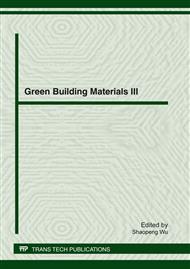p.113
p.119
p.123
p.128
p.136
p.142
p.149
p.155
p.162
Effects of Sasobit on Rheological Properties of Asphalt Binders
Abstract:
Research in the laboratory was carried out to determine if addition of warm mix asphalt additive (Sasobit) has potential to reduce the temperature comparison with control mix. To fulfill this purpose five types of asphalt binders have been produced with a Sasobit additive in concentration range from 0 to 10% by weight of the asphalt. Viscosity test and dynamic shear rheometer test are conducted for the investigation of effects of Sasobit on rheological properties characteristics of binders. Viscosity tests on binders indicated that the Sasobit binders had significantly lower viscosities compared to control binders at the temperature above 100°C, indicating that Sasobit can reduce the mixing and compaction temperatures above the melting point of Sasobit. Sasobit modified binders are more sensitive cracking and had more excellent rutting resistance properties at service temperatures compared with original bitumen. Based on the test results, the suggest content of Sasobit addition is 3% by weight.
Info:
Periodical:
Pages:
136-141
Citation:
Online since:
April 2012
Authors:
Keywords:
Price:
Сopyright:
© 2012 Trans Tech Publications Ltd. All Rights Reserved
Share:
Citation:


